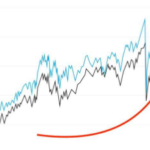In this article I will focus on the Best Cross-chain Stablecoins, and the value of the stability and flexibility they bring to multiple blockchain ecosystems. Cross-chain stablecoins enable effortless value transfer, boost liquidity and enhance DeFi applications.
This guide examines unique features of cross-chain stablecoins along with benefits and challenges. Such analysis will shed more light on the role of this stablecoin in today’s digital finance landscape.
What is Stablecoins?
Stablecoins are a special kind of cryptocurrency created to hold a value of the US dollar, Euro, gold, or collection of assets without losing value. They are quite different from Bitcoin or Ethereum which are known for their fluctuations.

Stablecoins are practical for everyday transactions, remittance, or savings/holding due to their price stability. They rely on blockchain technology just as Bitcoin or Ethereum does, but use conventional assets instead for backing.
Stablecoins have the backing of either fiat reserves, commodities, or even algorithmic instruments which keep the demand and supply in ratio. This balance bridge stablecoins offer to the world of decentralised bitcoin economy along with conventional finance makes stablecoins unique.
How To choose Best Cross-chain Stablecoins
Here is a summary for some of the most useful tips for selecting the top cross-chain stable coins:
Stability Mechanism – Evaluate the different stables coins and the type of reliability they offer. Is the stable coin fiat-backed, crypto-collateralized, or algorithmic.
Cross-chain Compatibility – Make sure stable coins support and cross work with various blockchains such as Ethereum, BNB Chain, and Polygon.
Adoption and Liquidity – Liquidity, and broad acceptance across many exchanges and DeFi platforms ensures ease of trading and deployment.
Risk & Security – Depending on the issuer, confirm that the stable coin is audited frequently and custodially supported.
Network Fees – Ascertain the cheapest stable coins by evaluating gas fees, fee levels, and transfer costs on different chains.
Legal Compliance – Stay away from stable coins that have not passed Know your customer norms and fail other global financial regulations.
Audit and Reserve – Keep in mind the issuer’s obligations and willingness to offer audited reserve holdings.
Key Point & Best Cross-chain Stablecoins List
| Stablecoin | Key Point |
|---|---|
| USDT (Tether) | Most liquid and widely adopted stablecoin across multiple blockchains. |
| DAI (MakerDAO) | Fully decentralized and crypto-collateralized stablecoin. |
| FRAX | Hybrid stablecoin with partial collateral and algorithmic stability. |
| MAI (QiDAO) | Polygon-native decentralized stablecoin backed by crypto collateral. |
| sUSD (Synthetix) | Best suited for synthetic assets and derivatives trading. |
| USDP (Paxos) | Regulated and fiat-backed stablecoin with strong compliance. |
| UXD (UXD Protocol) | Delta-neutral backed stablecoin designed on Solana. |
| CUSD (Celo Dollar) | Mobile-first stablecoin optimized for payments in the Celo ecosystem. |
1.USDT (Tether)
USDT (Tether) remains one of the best cross-chain stablecoins due to its exceptional liquidity and presence across virtually every major blockchain like Ethereum, TRON, BNB Chain, and Polygon.
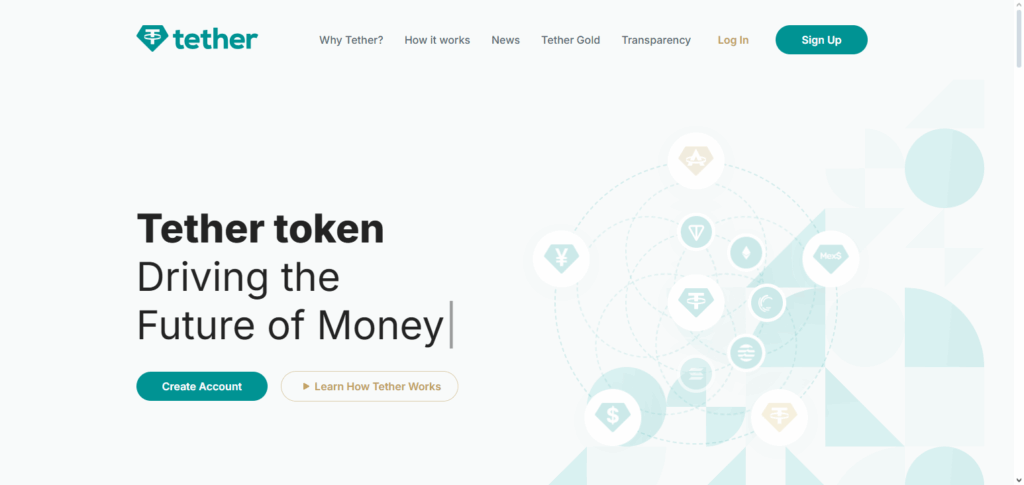
This extensive integration enables users to transfer value across multiple ecosystems effortlessly, making it ideal for trading, payments, and DeFi. Its dominance as the most widely accepted stablecoin gives it unmatched accessibility and speed, which cross-chain stablecoin competitors cannot replicate.
| Feature | Details |
|---|---|
| Stablecoin Name | USDT (Tether) |
| Type | Fiat-backed stablecoin (pegged to USD) |
| Cross-Chain Support | Ethereum, TRON, BNB Chain, Polygon, Solana, Avalanche, and more |
| Liquidity | Highest global liquidity and adoption |
| KYC Requirement | Minimal KYC for peer-to-peer transfers; exchange rules vary |
| Use Cases | Trading, payments, remittances, DeFi integration |
| Unique Point | Widely accepted across blockchains, enabling seamless value transfer |
2.DAI (MakerDAO)
DAI (MakerDAO) is one of the few cross-chain stablecoins worthy of recognition due to its unique decentralized design that does not rely on bank credit and is completely crypto-collateralized. Unlike fiat-backed stablecoins, DAI’s peg is managed and secured via smart contracts and overcollateralized assets, which is transparent and resilient.
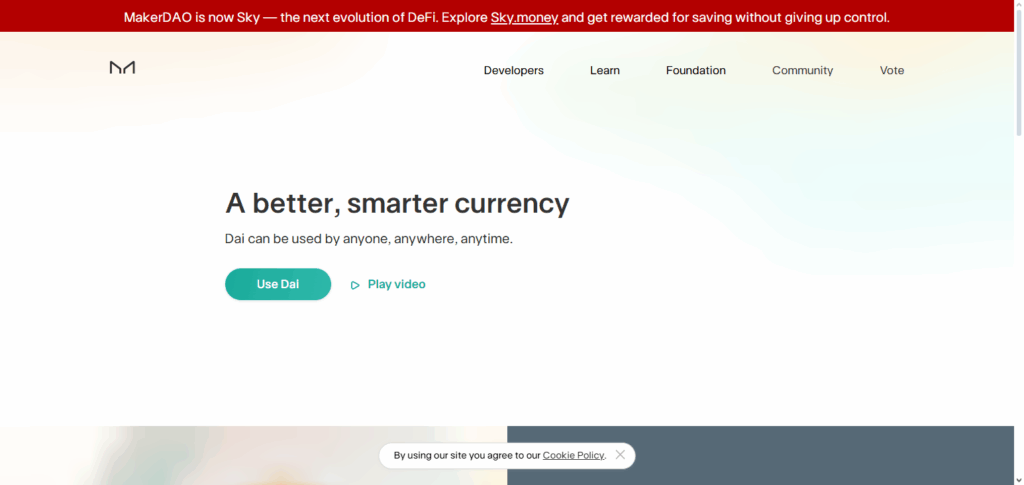
One of DAI’s unique strengths comes from its governance structure. It is held by a global community instead of a single central issuer which allows the community to enjoy a higher level of trust and control. DAI is widely used on multiple blockchains and has strong DeFi integration. It serves as a reliable stablecoin for cross-chain transactions with censorship resistance.
| Feature | Details |
|---|---|
| Stablecoin Name | DAI (MakerDAO) |
| Type | Crypto-collateralized, decentralized stablecoin |
| Cross-Chain Support | Ethereum, BNB Chain, Polygon, Avalanche, Arbitrum, Optimism, and more |
| Liquidity | High adoption across DeFi platforms |
| KYC Requirement | Minimal KYC, as it is minted via decentralized smart contracts |
| Use Cases | Lending, borrowing, yield farming, payments |
| Unique Point | Fully decentralized governance with on-chain collateral transparency |
3.FRAX
FRAX is one of the best cross-chain stable coins due to the cutting-edge hybrid model combining collateral backing with algorithmic stability which underpins its market value. Thanks to this dual approach, FRAX is able to maintain price stability and use funds more efficiently than fully collateralized stable coins.
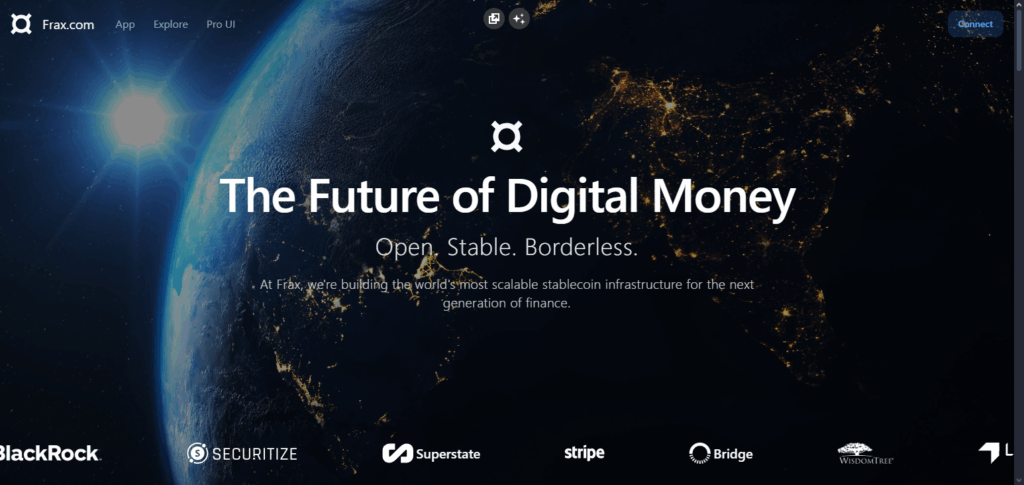
FRAX’ unique strength is adaptability—it is able to adjust the ratio of collateralized assets relative to the freely floating assets. This market-driven approach offers FRAX flexibility and sustainability. As its use grows FRAX is increasingly integrating with multiple blockchains, offering a progressive solution to the problem of decentralization, efficiency and cross-chain stable coins.
| Feature | Details |
|---|---|
| Stablecoin Name | FRAX |
| Type | Hybrid stablecoin (partially collateralized, partially algorithmic) |
| Cross-Chain Support | Ethereum, BNB Chain, Polygon, Avalanche, Fantom, Arbitrum, Optimism, and more |
| Liquidity | Growing adoption in DeFi and stablecoin pools |
| KYC Requirement | Minimal KYC, as it operates via decentralized protocols |
| Use Cases | Stable trading pairs, lending, liquidity provision, DeFi strategies |
| Unique Point | Dynamic collateral ratio system that adjusts to market conditions |
4.MAI (QiDAO)
MAI (QiDAO) is often regarded as one of the leading cross-chain stablecoins on the market due to being completely minted and decentralized through overcollateralized crypto loans, primarily on the Polygon network, while also being bridged to other chains.
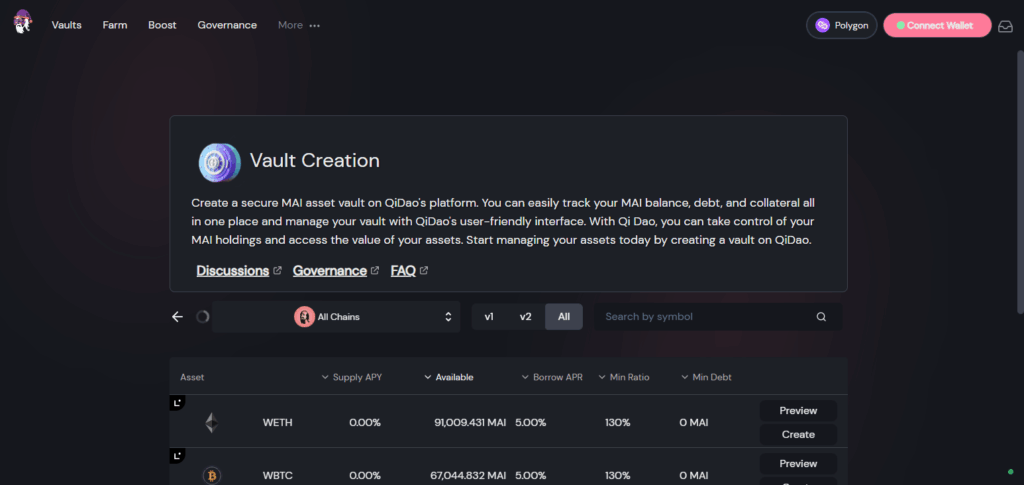
Retaining the collateral while generating MAI is a major game changer, allowing users to maintain liquidity without the need to sell collateralized assets. This independent model is completely community-centric, allowing for 100% transparency without any suffocating, central authority. This, along with MAI’s cohort of cross-chain stablecoins, makes MAI a dependable, stablecoin suited for the DeFi world.
| Feature | Details |
|---|---|
| Stablecoin Name | MAI (QiDAO) |
| Type | Crypto-collateralized, decentralized stablecoin |
| Cross-Chain Support | Polygon, Fantom, Avalanche, BNB Chain, Arbitrum, Optimism, Gnosis, and more |
| Liquidity | Strong usage within Polygon and expanding across DeFi ecosystems |
| KYC Requirement | Minimal KYC, minted via smart contracts without intermediaries |
| Use Cases | Borrowing against crypto assets, DeFi lending, payments |
| Unique Point | Users keep full ownership of collateral while minting MAI |
5.sUSD (Synthetix)
sUSD (Synthetix) is among the finest cross-chain stablecoins because it is purpose-built to serve synthetic assets and derivatives within the decentralized finance space. sUSD stablecoin unlike others is woven into the deep fabric of the Synthetix protocol where it functions as the settlement currency of numerous synthetic trading pairs.
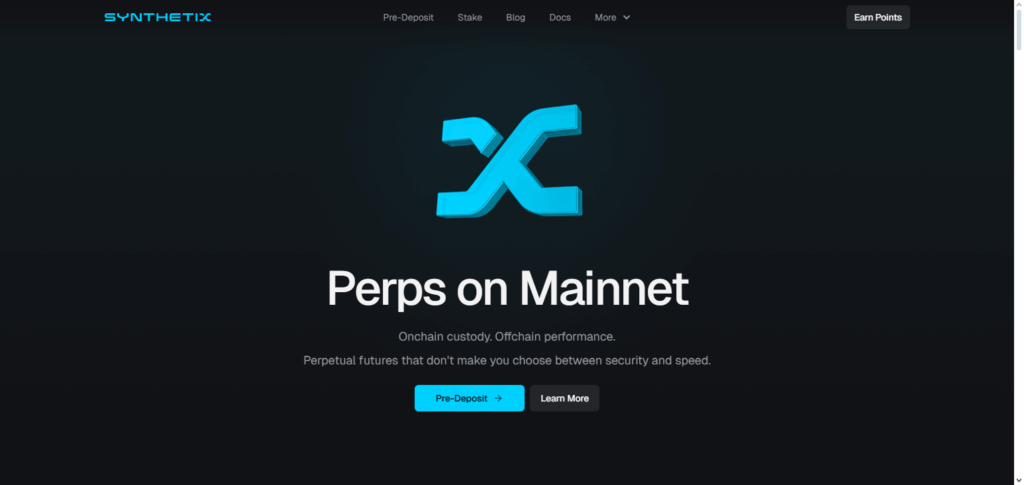
Its distinct value proposition is pegged to the ability to provide stable value while offering access to a myriad of assets without actually owning the underlying tokens. With sUSD’s multi-chain support, it’s ability to synthesize stability with cutting-edge DeFi technology remains unparalleled.
| Feature | Details |
|---|---|
| Stablecoin Name | sUSD (Synthetix) |
| Type | Crypto-collateralized stablecoin (backed by SNX staking) |
| Cross-Chain Support | Ethereum, Optimism, and other supported L2 solutions |
| Liquidity | Strong within Synthetix ecosystem and DeFi derivatives markets |
| KYC Requirement | Minimal KYC, issued through decentralized staking and contracts |
| Use Cases | Synthetic asset trading, derivatives settlement, DeFi collateral |
| Unique Point | Native stablecoin powering the Synthetix derivatives platform |
6.USDP (Paxos)
USDP (Paxos) is considered one of the best cross-chain stablecoins because of strong regulatory foundation and transparency of its operations. Its fully backed by US dollars and regulatory trust provides greater security and liability often lacking in other stablecoins.
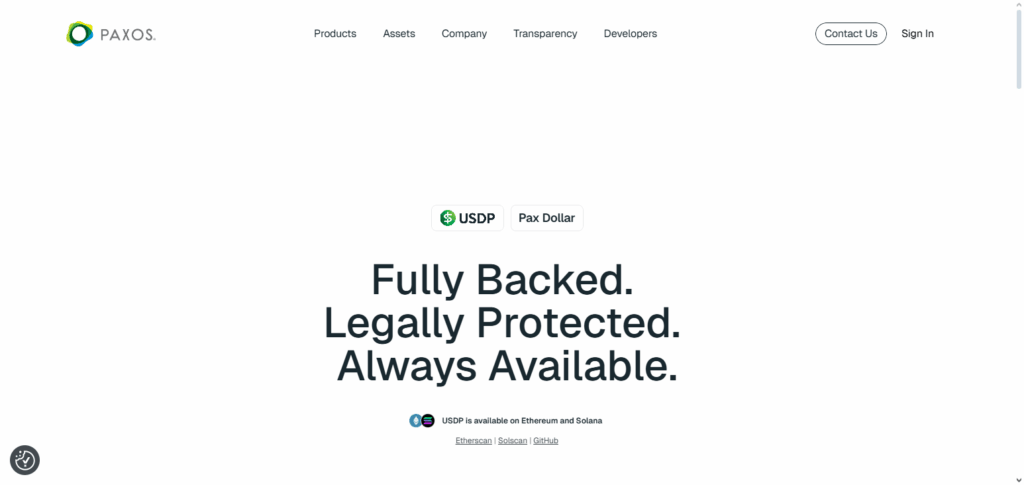
Its unique strength of value lies in regulatory compliance which makes it suited for institutions and enterprises which value legal correctness with stability. USDP is extending its cross-chain capabilities and with it comes the fusion of trust, transparency, and accessibility which secure the transferring of digital assets.
| Feature | Details |
|---|---|
| Stablecoin Name | USDP (Paxos Dollar) |
| Type | Fiat-backed stablecoin (pegged to USD) |
| Cross-Chain Support | Ethereum, BNB Chain, and expanding to other networks |
| Liquidity | Moderate adoption compared to USDT and USDC |
| KYC Requirement | Minimal KYC for on-chain transfers; stricter rules on centralized exchanges |
| Use Cases | Trading, payments, institutional settlements |
| Unique Point | Fully regulated and audited, ensuring strong compliance and trust |
7.UXD (UXD Protocol)
UXD (UXD Protocol) is acclaimed to be one of the most innovative cross-chain stablecoins as it employs a delta neutral stategy to maintain stastbility without fiat reserves. Because the collateral is hedged on a perpetual futures UXD is able to price stablilize in a completely decentralized manner and thus less dependent on central custodians.
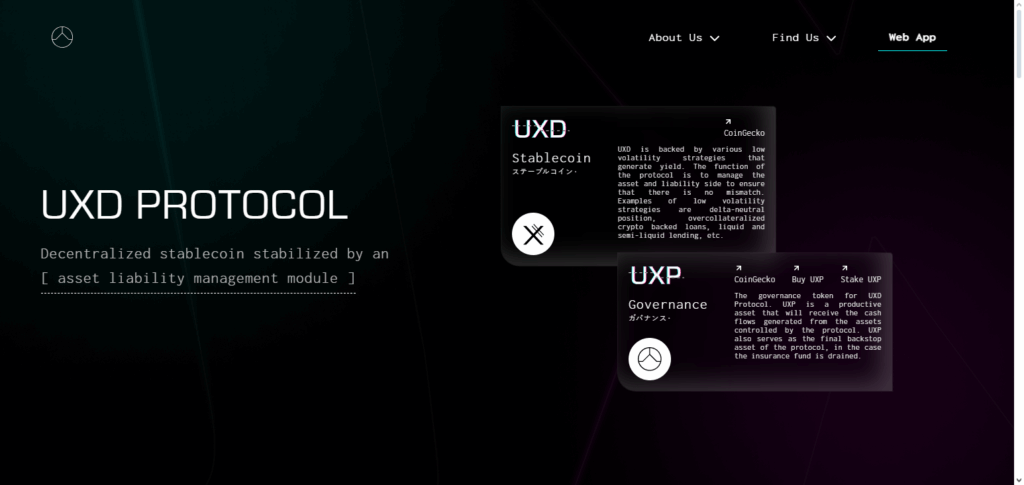
Its main forte is volatile market resistance as the architecture defends the risk between collateral and futures. With the increasing cross-chain proliferation, UXD brings an interesting and safe solution to the problem of value transfer.
| Feature | Details |
|---|---|
| Stablecoin Name | UXD (UXD Protocol) |
| Type | Delta-neutral crypto-backed stablecoin |
| Cross-Chain Support | Solana (native), expanding to other blockchains |
| Liquidity | Growing adoption within Solana DeFi ecosystem |
| KYC Requirement | Minimal KYC, as issuance and usage are handled via decentralized protocols |
| Use Cases | Stable DeFi trading, hedging, yield strategies |
| Unique Point | Maintains price stability through delta-neutral perpetual futures positions |
8.CUSD (Celo Dollar)
Celo dollars stands out in the regard of mobile-financial inclusion cross chain stablecoins. Though native to the Celo blockchain, CUSD is bridge to multiple ecosystems, enabling real time, low-cost transactions ideal for global payments and remittances.
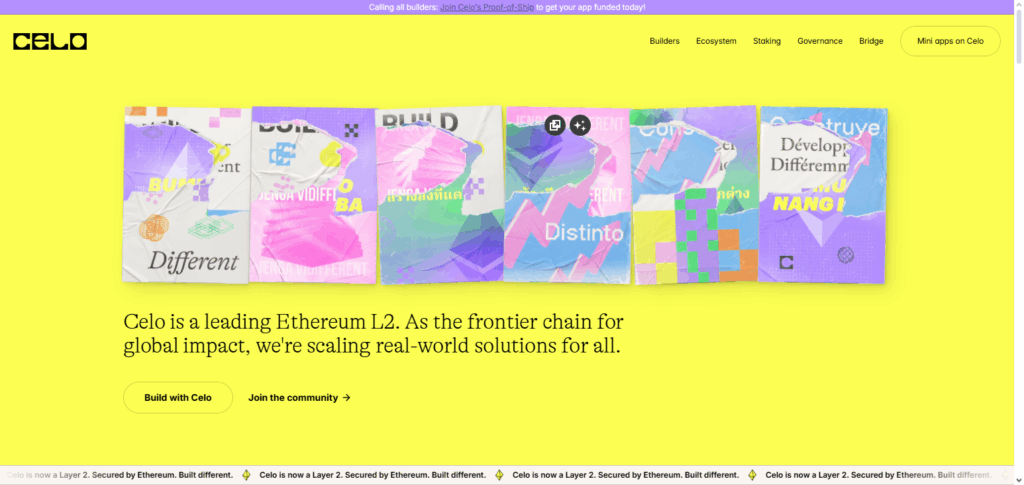
CUSD’s greatest strength is its accessibility; people in underbanked areas can easily transact using stable digital money with the smartphone optimized CUSD app. CUSD cross-chain interoperability, mobile integration, and low-cost transactions encouraged mass stable digital money use in daily life.
| Feature | Details |
|---|---|
| Stablecoin Name | CUSD (Celo Dollar) |
| Type | Crypto-collateralized stablecoin (backed by Celo assets) |
| Cross-Chain Support | Native to Celo, bridged to Ethereum, Polygon, BNB Chain, and more |
| Liquidity | Strong within the Celo ecosystem, growing across other chains |
| KYC Requirement | Minimal KYC, accessible via decentralized wallets and apps |
| Use Cases | Mobile payments, remittances, DeFi lending, everyday transactions |
| Unique Point | Optimized for mobile-first financial inclusion and low-cost transfers |
Pros & Cons
Pros
- Seamless Transfers – Transfer of value across multiple blockchains is streamlined.
- Increased Liquidity – Trading volumes and access to DeFi protocols across ecosystems are elevated.
- User Flexibility – Users are able to utilize cheaper networks with lower fees for stablecoin transactions.
- DeFi Integration – Cross-chain lending, staking, and yield farming utilize stablecoins widely.
- Financial Inclusion – Global payments and remittances can be sent without intermediaries.
Cons
- Security Risks – Cross-chain bridges are often targets for hacking.
- Complexity – New users may struggle with stablecoins cross-chains.
- Regulative Uncertainty** – Compliance issues may arise in some cross-chain stablecoins.
- Liquidity Fragmentation – Decreased efficiency can often come with spread across multiple chains.
- Dependence on Oracles/Bridges – Externally reliant infrastructure are concealed risks.
Conclusion
To sum up, the best cross-chain stablecoins helps users all around the world by providing liquidity, versatility, and blockchain stability; thus providing links to multiple blockchain ecosystems. With highly adopted options like DAI and USDT, and other inventive models like FRAX, MAI, and UXD, each has distinct advantages tailored for varying situations.
Though bridge security and regulatory issues persist, the rushing use of them shows their relevance in payments, DeFi, and trading. In the end, cross-chain stablecoins are crucial in advancing the world towards seamless and borderless finance.
FAQ
Why are cross-chain stablecoins important?
They enable smooth transfers, increase liquidity across DeFi ecosystems, and reduce reliance on a single blockchain.
Why are cross-chain stablecoins important?
They enable smooth transfers, increase liquidity across DeFi ecosystems, and reduce reliance on a single blockchain.
Which are the best cross-chain stablecoins?
Some of the best include USDT, DAI, FRAX, MAI, sUSD, USDP, UXD, and CUSD.





